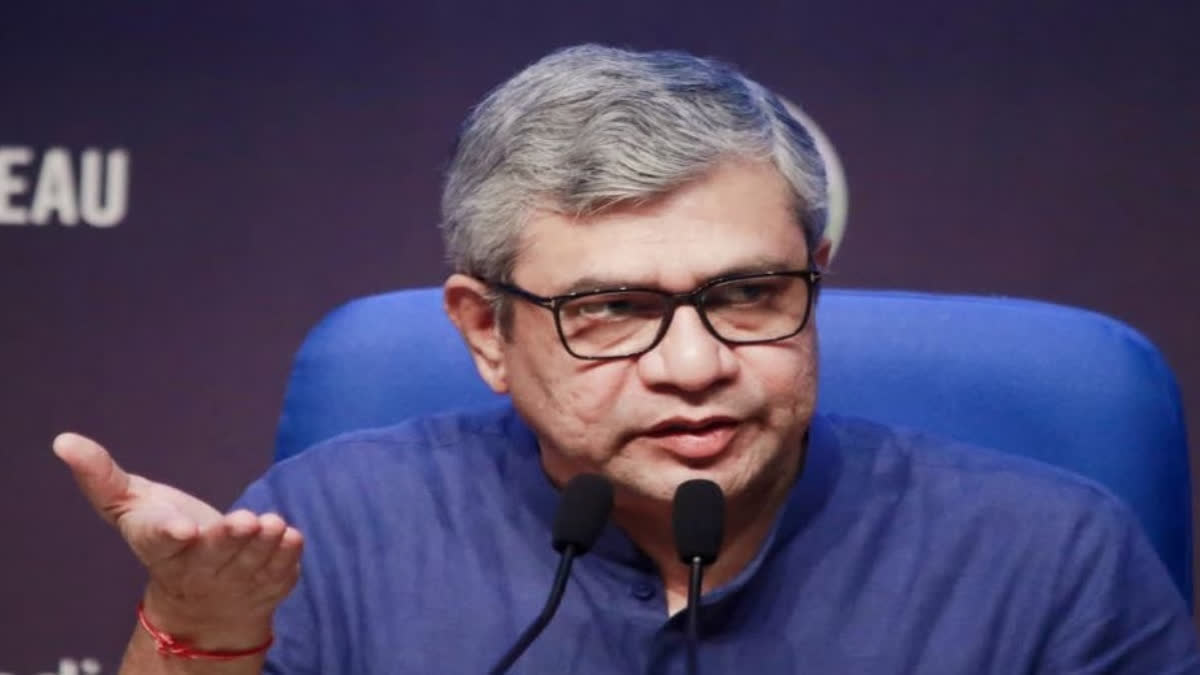New Delhi: Allaying concerns over rail safety, Railway Minister Ashwini Vaishnaw has asserted that implementation of the 'Kavach' automatic train protection system was being carried out on a war footing alongside rigorous quality checks for tracks and signals.
From ultrasound tests to installation of fog safety devices, the latest technology tools and solutions are being used across the network, while special training is also being imparted to drivers and other personnel for the Kavach system, the minister told a select group of journalists here.
The comments assume significance in the wake of a spate of derailment cases reported in the recent past, which the opposition parties have used to attack the government. Kavach is an indigenously developed Automatic Train Protection (ATP) system and a highly technology-intensive system that requires safety certification of the highest order.
Among other things, Kavach aids the loco pilot in train running within specified speed limits by automatic application of brakes in case the driver fails to do so and also helps the train run safely during inclement weather. The Kavach system implementation involves an elaborate setup comprising telecom towers and laying of optical fibre along the rail network, installation of RFID tags throughout the track length, data centres at stations, devices fitted to tracks, onto the trains and even below engines.
With the designing and testing phases over, including through trials and pilots, the government is aiming to cover the entire network of over one lakh kilometres and more than 7,000 stations with Kavach during the next few years. Vaishnaw said tenders had already been issued for fitting 10,000 locomotives and 9,600 kilometres of track length with Kavach.
Besides, courses are being conducted at IRISET (Indian Railways Institute of Signal Engineering and Telecommunications) for training of personnel. Vaishnaw also explained in detail various safety measures being followed by the Railways, including more than 97,000 inspections done by officials so far this fiscal, alongside 2,500 kilometres of track renewal.
Besides, ultrasound tests are being done for the entire network and 1,86,000 (1.86 lakh) kilometres of tracks and 11.66 lakh welds have been tested with ultrasound machines since April, he added. New ultrasound machines have also been introduced, a large number of railway bridges rehabilitated, and hundreds of flyovers and underpasses constructed, the minister said.
Vaishnaw further said that 5,300 fog safety devices had been installed, quality checks of track fittings carried out by the Research Designs and Standards Organisation (RDSO), and hardship and risk allowance of trackmen increased by 25 per cent. The Kavach system has also been developed by the RDSO, and it can apply brakes automatically in case of an emergency when a train driver fails to act in time.
Earlier this week, Vaishnaw reviewed a trial of the Kavach system between Sawai Madhopur and Indargarh stations in the West Central Railway zone. He travelled in the engine of a Kavach-fitted train, which, while speeding at 130 kilometres per hour, stopped 50 metres before a red signal on its own without any manual interference with the braking function by the loco pilot.
According to Railway officials present during the trial, Kavach was tested for seven different emergency situations and it worked as expected in all of them. After the trial, Vaishnaw had said that in another five to six years, the latest version of Kavach would be installed across all rail networks in the country.
Work is underway to operationalise the system on the 3,000-kilometre Mumbai-Delhi and Delhi-Kolkata routes and the installation work on another 6,000 kilometres will be started soon. The first field trials of Kavach on passenger trains were started in February 2016 and, based on the experience and independent safety assessment of the system by a third party, three firms were approved in 2018-19 for the supply of Kavach.
While new trains in the future may come fitted with the Kavach system, it needs to be installed on the existing fleet of locomotives. Indian Railways had introduced an Anti-Collision Device system in 2006 but it was abandoned in 2012 after being found to be faulty.



